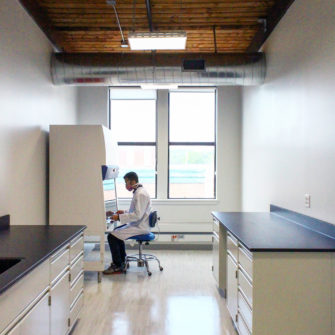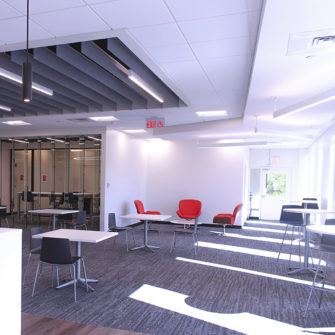The more I read and learn about the looming Fiscal Cliff, the more concerned I get for our local design and construction economy. Two weeks ago, sixteen of the presidents of leading academic institutions in the Boston area co-signed a letter to Representative Ed Markey articulating the grave impact sequestration would have on the research community. In the letter, the authors make a compelling argument about the role that grants from the National Institutes of Health, the Department of Defense, the NSF, NASA and the Department of Energy has on fueling an “Innovation Economy”. They cite some staggering figures. Their data shows that the $2.4 billion invested in Massachusetts in FY11 by the NIH alone attracted a matching influx of $3 billion from private venture capital. That’s $5 billion a year going into salaries for researchers, investments in laboratory equipment (much of it made and developed here in Massachusetts) and, more importantly to us, investment in capital projects. And that’s just the impact of the NIH, not the other agencies listed in the letter.
While the authors of the letter did not focus on the role of capital projects in a thriving and expansive innovation economy, it is important to understand that much of the resurgence of construction activity going on here now is directly due to that leveraged inflow of federal and private dollars. As laboratory architects, it is no stretch to say that 100% of our thriving business has been to serve clients backed by federal grants and private VC investments. The investments create space churn which creates opportunity for work for all of us who design or build.
Here is how it works. A new grant comes in to a university researcher to study a disease or to develop new materials for computing or energy production. Part of this grant is used to purchase new equipment and to hire more graduate students and post-docs. The space available is too small for the growth of team and the infrastructure is unable to support the modern equipment. A small project is created to refit space to support the grant activities. The research gains traction and the researcher sees potential to commercialize the project through tech transfer. Venture capital backs the idea and a new start-up is formed that needs space for people and equipment. Another project is born. The start-up shows promise an attracts more funding, causing a need for more space. Another project is born. As each start-up succeeds and fails, it leaves space vacant for a future use. A whole second generation of projects spring up to fill the voids left by this constantly churning business cycle.
This is an excerpt from an article written by Mark Reed for High-Profile. Read the full article »

